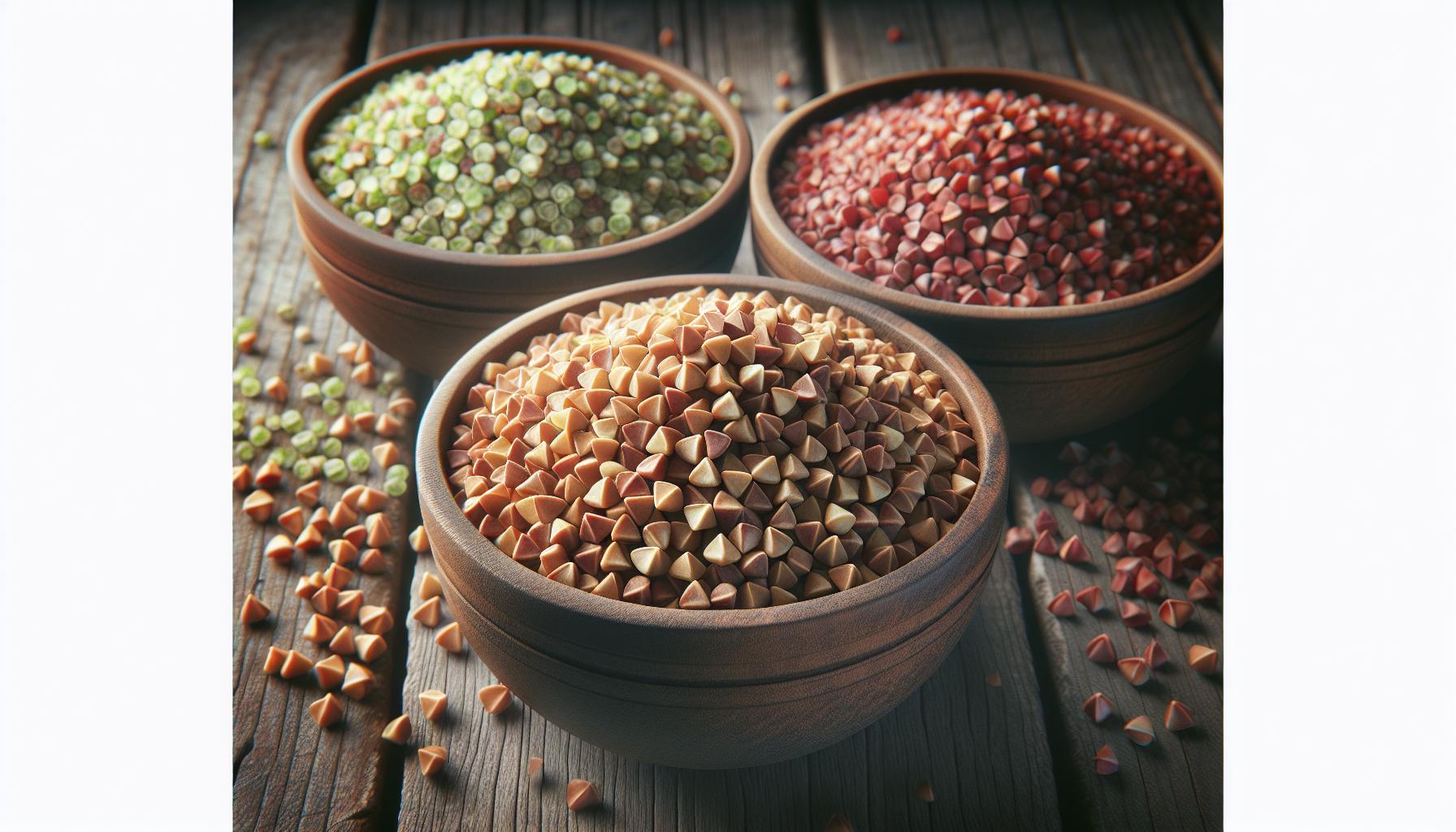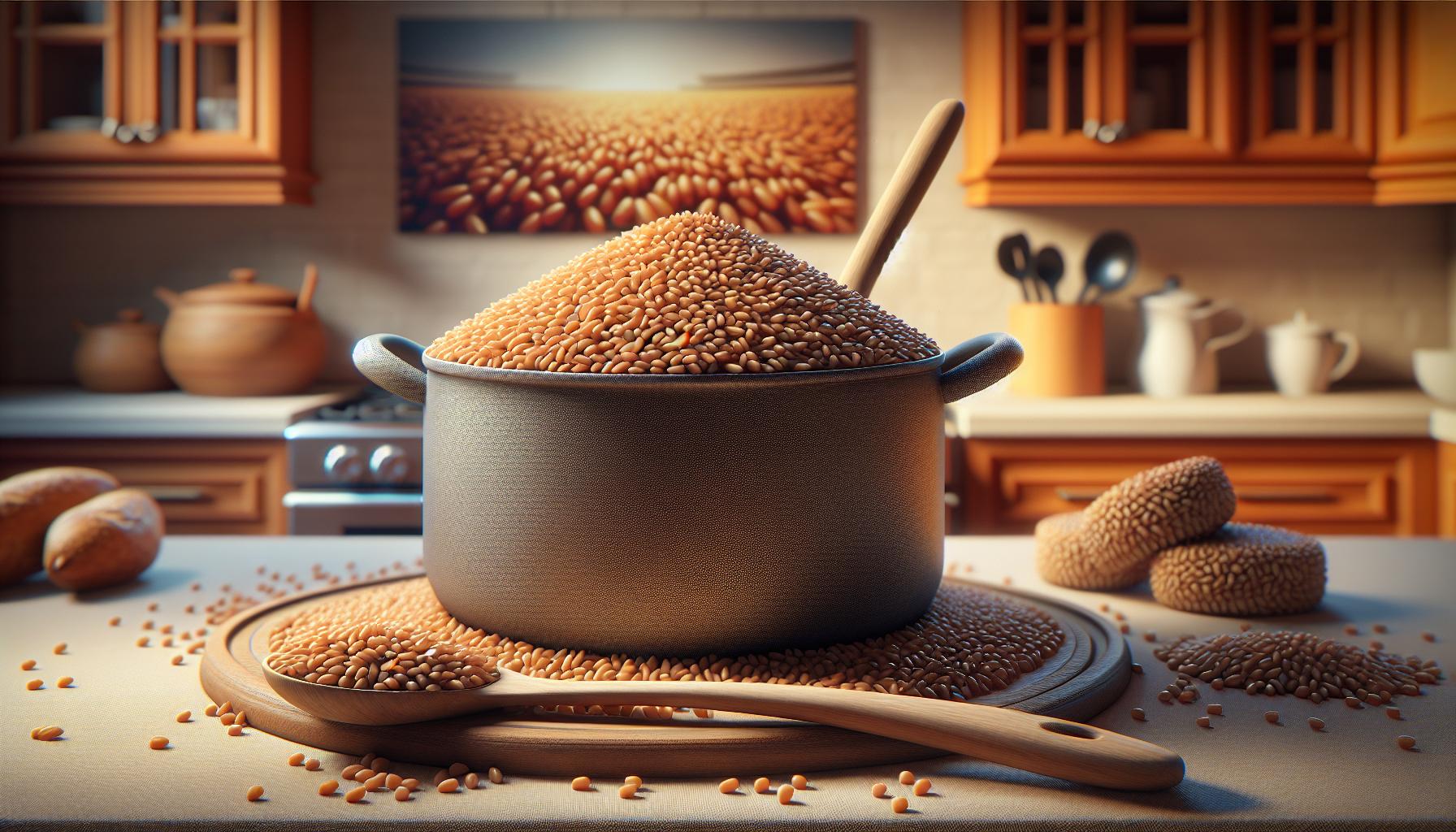
Kasha, the hearty Eastern European comfort food, has been warming souls for centuries. This toasted buckwheat groats dish isn’t just another grain in the pantry – it’s a versatile powerhouse of nutty flavors and wholesome nutrition that’s waiting to transform everyday meals into something extraordinary.
While many home cooks feel intimidated by kasha’s reputation for being finicky, mastering this ancient grain is easier than you’d think. From fluffy pilaf-style preparations to creamy breakfast porridges, the right technique can make all the difference between perfectly toasted kernels and an unfortunate mushy mess. Whether you’re a seasoned chef or a curious foodie, learning to cook kasha properly will add a delicious new dimension to your culinary repertoire.
Kasha Cooking Techniques
Kasha describes roasted buckwheat groats popular throughout Eastern Europe. This ancient grain dates back to 5000 BCE in Southeast Asia before spreading westward through Russia and Ukraine.
Traditional Russian Cooking Methods
Russian kasha preparation involves three distinct steps: washing, toasting and cooking. Seasoned cooks rinse the raw buckwheat groats multiple times until the water runs clear. The grains toast in a dry skillet over medium heat for 4-5 minutes until golden brown with a nutty aroma. Traditional cooking combines the toasted groats with hot water or milk in a 1:2 ratio along with salt butter. The mixture simmers covered for 15-20 minutes until the liquid absorbs completely.
Eastern European cooks use two signature techniques:
- Mixing eggs into toasted groats before cooking for fluffy separated grains
- Adding sautéed mushrooms onions during the final 5 minutes
| Region | Cooking Liquid | Common Additions |
|---|---|---|
| Russia | Water or Milk | Butter Salt |
| Ukraine | Bone Broth | Fried Onions |
| Poland | Mushroom Stock | Dried Mushrooms |
Choosing the Right Buckwheat Groats

Selecting the appropriate buckwheat groats determines the success of kasha preparation. Different types of groats create distinct flavors and textures in the final dish.
Raw vs Toasted Groats
Raw buckwheat groats appear light green or cream-colored with a mild, grassy flavor profile. These unroasted kernels maintain a firm texture during cooking, making them ideal for salads or side dishes. Toasted groats, known as kasha, display a reddish-brown color with nutty undertones. Russian markets label these groats by size numbers: #1 (whole groats), #2 (medium grind) or #3 (fine grind). Whole groats produce heartier dishes with more texture, while medium grind creates traditional fluffy kasha. Fine grind transforms into a smooth, porridge-like consistency perfect for breakfast preparations.
| Groat Type | Color | Texture | Best Uses |
|---|---|---|---|
| Raw | Light green/cream | Firm | Salads, side dishes |
| Whole (#1) | Reddish-brown | Hearty | Pilaf, stuffings |
| Medium (#2) | Reddish-brown | Fluffy | Traditional kasha |
| Fine (#3) | Reddish-brown | Smooth | Porridge, breakfast |
Basic Stovetop Kasha Cooking Method

The stovetop method forms the foundation for creating perfectly cooked kasha. This traditional technique balances heat control with precise timing to develop the signature nutty flavor of toasted buckwheat groats.
Achieving Perfect Texture
The ideal kasha texture emerges from a 2:1 liquid-to-groats ratio combined with proper heat management. Hot liquid poured over toasted groats creates instant steam penetration, while maintaining a steady simmer prevents mushy results. Stirring the kasha once after 5 minutes of cooking distributes moisture evenly, letting each grain develop independently. A 15-minute rest period after cooking allows the grains to absorb remaining moisture uniformly.
| Cooking Stage | Temperature | Duration |
|---|---|---|
| Initial Boil | High heat | 2-3 min |
| Simmer | Low heat | 15-18 min |
| Rest Period | Off heat | 15 min |
- Separate grains with distinct boundaries
- Tender but firm kernel structure
- Light fluffy appearance without clumping
- Visible hull integrity on each grain
Steam and Oven-Baked Techniques

Steaming and oven-baking offer alternative methods for preparing kasha, creating unique textures and flavors distinct from stovetop cooking. These techniques provide consistent results with minimal monitoring.
Using a Rice Cooker for Kasha
Rice cookers simplify kasha preparation through automated temperature control and timing. Adding 2 cups of water or broth for every cup of toasted buckwheat groats ensures optimal hydration. The standard rice setting produces fluffy kasha in 20-25 minutes, maintaining individual grain separation. For enhanced flavor, seasoning the cooking liquid with 1/2 teaspoon of salt per cup of groats enriches the final dish. The “keep warm” function allows the kasha to rest for 10 minutes after cooking, ensuring even moisture distribution throughout the grains.
- Regular/White Rice: Creates tender separate grains
- Brown Rice: Produces firmer texture with nuttier flavor
- Quick Cook: Suitable for pre-soaked groats
- Steam: Ideal for reheating cooked kasha
Popular Kasha Variations and Recipes
Kasha’s versatility extends beyond basic preparation methods to encompass diverse sweet and savory applications. Eastern European culinary traditions showcase numerous ways to transform this nutritious grain into memorable dishes.
Sweet and Savory Options
Sweet variations include:
- Honey kasha porridge topped with fresh berries
- Apple cinnamon kasha with toasted walnuts
- Maple syrup kasha with caramelized bananas
- Chocolate kasha pudding with vanilla extract
- Dried fruit kasha with almonds
Savory preparations feature:
- Mushroom onion kasha pilaf
- Kasha varnishkes with bow tie pasta
- Beef bone broth kasha with carrots
- Roasted garlic kasha with herbs
- Vegetable stock kasha with sautéed leeks
Traditional combinations pair kasha with:
| Ingredient | Cooking Method | Flavor Profile |
|---|---|---|
| Mushrooms | Pan-sautéed | Earthy umami |
| Onions | Caramelized | Sweet savory |
| Eggs | Scrambled in | Light fluffy |
| Bone broth | Simmered | Rich meaty |
| Milk | Slow-cooked | Creamy mild |
Each variation incorporates specific seasoning blends to enhance kasha’s natural nutty flavor. Russian recipes emphasize butter black pepper combinations. Ukrainian versions feature garlic dill pairings. Polish adaptations incorporate paprika caraway elements.
Tips for Storage and Reheating
Proper storage extends cooked kasha’s shelf life to 5 days when kept in an airtight container in the refrigerator. Room temperature storage limits freshness to 2 hours due to moisture content leading to bacterial growth. Freezing cooked kasha maintains quality for up to 3 months in freezer bags with excess air removed.
Storage Guidelines
- Store uncooked buckwheat groats in a cool dark pantry at 60-70°F for 12 months
- Transfer leftover kasha to glass containers with tight fitting lids
- Label containers with cooking date using waterproof markers
- Place containers in refrigerator sections below 40°F
- Keep frozen kasha in heavy duty freezer bags marked with contents dates
Reheating Methods
- Stovetop: Add 2 tablespoons water per cup of kasha heat on medium stirring occasionally
- Microwave: Place in microwave safe dish add 1 tablespoon water cover heat 1 minute intervals
- Steam: Use bamboo steamer over simmering water for 3 minutes until heated through
- Oven: Warm at 350°F in covered baking dish with splash of broth for 10 minutes
- Cool kasha completely before refrigerating prevents condensation
- Portion leftovers into single serving containers reduces reheating cycles
- Thaw frozen kasha overnight in refrigerator maintains texture
- Add fresh herbs butter or oil when reheating restores original flavors
- Discard refrigerated kasha showing signs of mold off odors or sliminess
Mastering Kasha Preparation
Mastering kasha preparation opens up a world of culinary possibilities that extend far beyond traditional Eastern European cuisine. Whether using stovetop steaming oven-baking or rice cooker methods the key lies in understanding proper techniques and ratios.
Armed with knowledge about selecting the right groats managing cooking temperatures and exploring diverse flavor combinations anyone can create delicious kasha dishes. This versatile grain’s ability to complement both sweet and savory recipes while offering significant nutritional benefits makes it a valuable addition to any kitchen repertoire.


